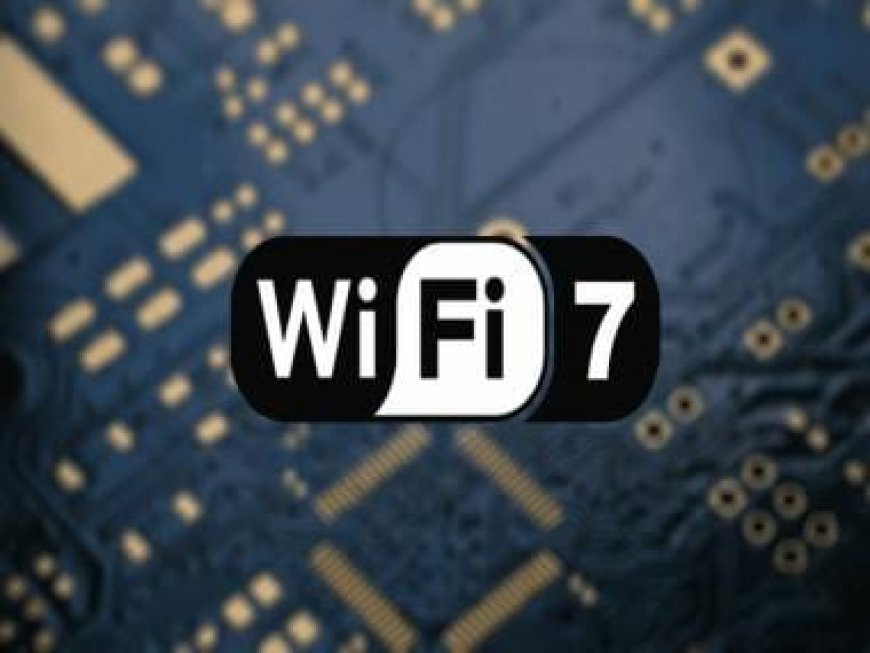What is WiFi 7, how fast is it compared to WiFi 6 and do you need to upgrade your routers?
What is WiFi 7, how fast is it compared to WiFi 6 and do you need to upgrade your routers?

In a major technological development, the world of wireless connectivity is poised to undergo yet another transformation as WiFi 7, the successor to WiFi 6E, makes its debut. This announcement comes approximately four years after the introduction of WiFi 6 and two years after the introduction of WiFi 6E, marking a significant advancement in wireless technology.
WiFi 7 promises to bring a substantial speed boost, building upon the groundwork laid by its predecessors. A key contributor to this enhancement is the utilization of the 6GHz band, unlocked by WiFi 6E, which offers wide-open spaces for data transmission. Additionally, WiFi 7 is set to employ innovative techniques aimed at accelerating data transfer speeds while reducing interference and minimizing network latency.
This emphasis on interference reduction and speed enhancement mirrors the hallmark features of both WiFi 6 and WiFi 6E, particularly the latter’s increased speed for compatible devices. However, one key difference with WiFi 7 is its compatibility with older devices, alleviating concerns about having to replace existing equipment. As users gradually transition to new WiFi 7-compatible devices, the benefits of this latest standard will become increasingly apparent.
Is WiFi 7 Faster?
Indeed, WiFi 7 is expected to deliver notably faster speeds. According to Intel, a typical WiFi 7 laptop could potentially achieve a maximum speed of nearly 5.8Gbps, albeit under theoretical conditions. Even half of this theoretical speed would be a substantial improvement for most users.
The primary driver of this speed boost is the channel bandwidth, which determines the capacity for data transmission. WiFi 7 doubles the maximum channel bandwidth to 320MHz, a significant upgrade compared to the 160MHz available on WiFi 5, 6, and 6E routers. This wider channel allows for more efficient data transmission, although it is exclusively supported on the 6GHz band.
Furthermore, WiFi 7 introduces Multi-Link Operation (MLO), enabling the combination of bands into a single connection. This means that if you have one connection offering 1Gbps on the 6GHz band and another at 700Mbps on the 5GHz band, combining them could yield speeds of up to 1.7Gbps. The effectiveness of this feature in practice will require further testing with WiFi 7 routers and compatible devices.
In terms of Multiple User Multiple Input Multiple Output (MU-MIMO) spatial streams, WiFi 7 raises the bar to 16 x 16, a significant improvement over the 8 x 8 support in WiFi 6. However, it’s essential to note that consumer-grade WiFi 6E routers, even high-end models, typically offer only 4 x 4 MU-MIMO support. Additionally, finding devices that exceed 2 x 2 MU-MIMO remains a challenge.
Improving Smart Home Connectivity
Smart home enthusiasts will likely welcome WiFi 7 for its potential to enhance the reliability of interconnected devices. WiFi 7 addresses the issue of airtime congestion by employing Orthogonal Frequency Division Multiple Access (OFDMA). This technique maximizes the use of carrier waves, even in the presence of interference, ensuring smoother data transmission.
However, it’s important to note that OFDMA is not backwards-compatible with older devices. Therefore, a complete transition to WiFi 7-compatible devices is necessary to fully realize the benefits of improved smart home connectivity.
Other Applications of WiFi 7
WiFi 7 presents several advantages beyond faster speeds and smart home improvements. It offers the potential for more stable mesh systems by allowing seamless switching between bands, reducing connection interruptions.
Furthermore, the implementation of MLO and OFDMA in WiFi 7 may result in reduced network lag, as devices can connect to multiple bands concurrently. This could lead to smoother and more responsive network experiences.
Is It Time to Upgrade to WiFi 7 and switch our routers?
While WiFi 7 routers are already available for purchase, it might not be the right time to rush out and invest in this new technology. The reason is simple: only a limited number of devices can currently support this standard, and it has not even been officially finalized yet.
Some chips supporting WiFi 7 are already in circulation. For instance, Qualcomm’s FastConnect 7800 mobile wireless chipset, introduced in 2022, can be found in select phones, such as the Samsung Galaxy S23 Ultra. However, it’s worth noting that the full functionality of WiFi 7 in these phones may only be realized if Samsung enables WiFi 7 on them.
WiFi 7 compatibility is also making its way into laptops and network cards. The 16-inch Acer Swift Edge laptop offers WiFi 7 support, and Intel plans to release its BE200 WiFi 7 network card before the end of 2023. Furthermore, other major computer manufacturers are expected to introduce devices that support the WiFi 7 standard over the next year.
If you are anticipating WiFi 7 to be the solution to your networking needs, it is advisable to exercise patience. With the specification still incomplete and only a limited number of devices supporting it, the tangible benefits of WiFi 7 may not be realized for months or even years to come.
Moreover, waiting until the WiFi 7 specification is finalized and routers getting certified by the WiFi Alliance is a prudent decision. This certification ensures that WiFi 7 routers are fully compliant with the established standard. Until then, WiFi 7 routers may come with a premium price tag, while the number of wireless devices capable of fully utilizing their advanced features remains limited, making it potentially cost-ineffective for most consumers.
What's Your Reaction?


























































